AT KOLAJ FEST NEW ORLEANS
Innovative Possibilities for Paper & Glue
At the heart of Kolaj Fest New Orleans is a symposium that investigates how contemporary artists are using and defining collage. Symposium sessions will take place on Friday and Saturday with three, ninety minute panels occuring on each day.
Todd Bartel will moderate a two-part session called “Materials and Sources”. What are the ingredients of collage and how do materials shift the meaning of the work and expand the tradition of the medium? The sessions present the work of artists who explore, in various ways, the substitution or expansion of “paper” and “glue” for innovative possibilities. Folks will leave this session with a broader understanding of the materials used in the medium and a greater appreciation for the impact source imagery has on collage work. For artists, this is an opportunity to gain deeper insight into your practice. For art professionals, these sessions will arm you with a toolbox for thinking about contemporary art differently.
Kolaj Fest New Orleans is a multi-day festival and symposium about contemporary collage and its role in art, culture, and society, July 12-15, 2018. Visit the website to learn more, see an overview of the program, and register to attend.
Meet the Artists
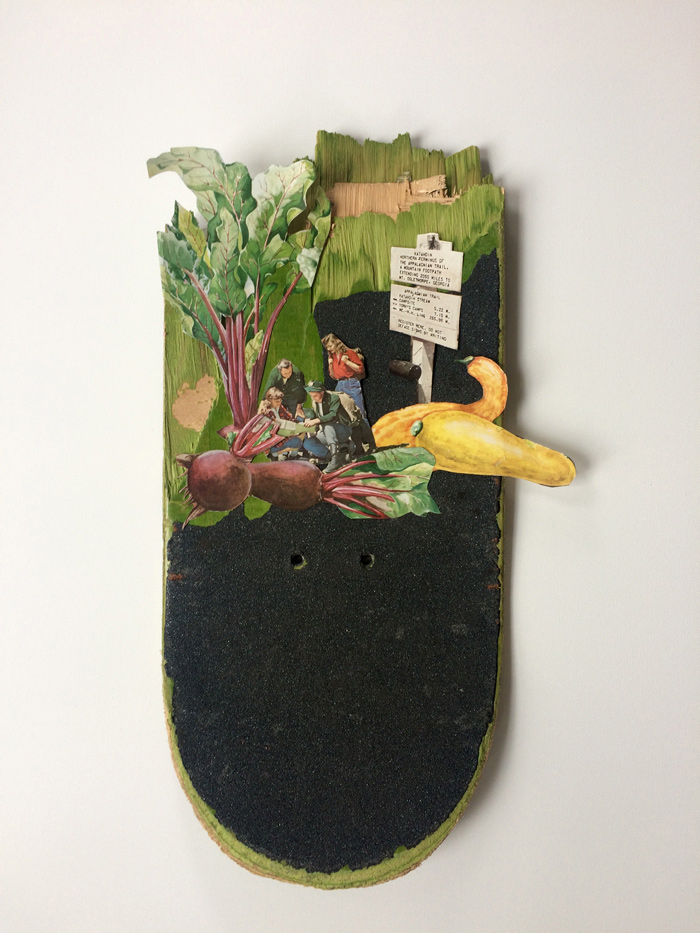
Amy Tingle has been a maker since she can remember. Her first creative project most likely involved constructing something out of acorns, flower petals, and moss. Now her work uses anything from paint chips to broken skateboard decks. (image: Lost, or How to Find Your Way (23″x8″x.5″; hand-cut vintage images on broken skateboard deck; 2016))
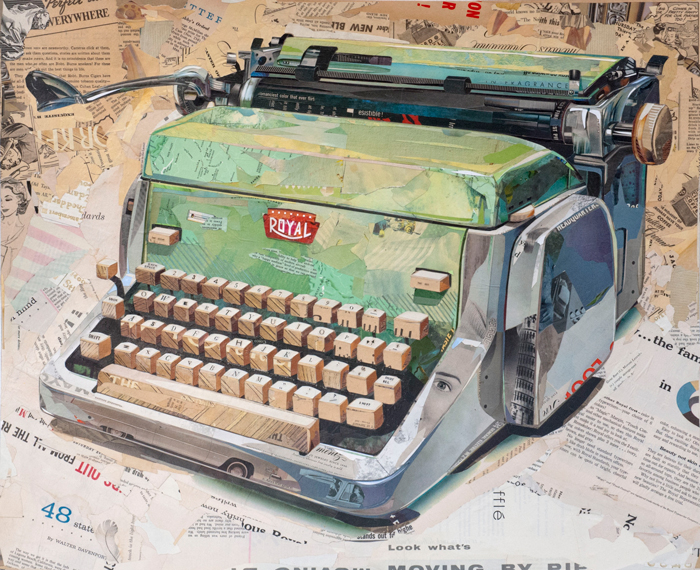
Using found newspaper and vintage colour magazines, Nathan Stromberg‘s collages appear at first to be realistic photographs, but on closer inspection contain loads of detail and historical references. His collages are a comment on the connections we make with designed objects. (image: Royal Typewriter in Green (19″x23″; vintage magazine collage; 2016))
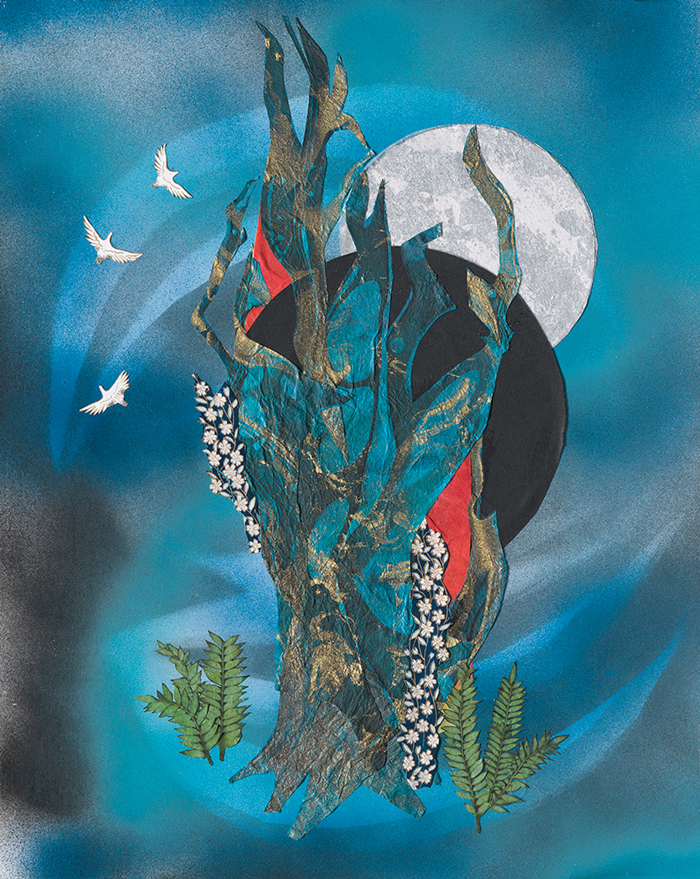
April Fletcher discovered collage after retiring from a career as a biologist for the National Wildlife Refuge System. In her work, she incorporates various kinds of art papers, natural plant materials which she collects and presses herself, acrylic paint, and enamel spray paints on gesso board backing. At times, she has used cloth, mesh, and other miscellanea such as small stickers of animals or insects. From Papyrus to Cotton Rag, Fletcher brings a wealth of knowledge about the origins of paper and its use in contemporary art. (image: Three Flights to the Moon (20″x16″; collage on spray paint background using art papers; 2017))

Much of Evelyn Davis-Walker‘s work examines the identity of housewives, and the homes they cared for, as depicted through advertisements from 1930 to 1959. What makes a house a home? Is it the wife, charged with its upkeep, or is it the outside structure defining the property? She uses the language of advertising copy in her artwork to manipulate social messages that once bombarded women. (image: Bessy’s Milk (8.5″x12″x4″; digital collage transfer decals on glass; 2014))
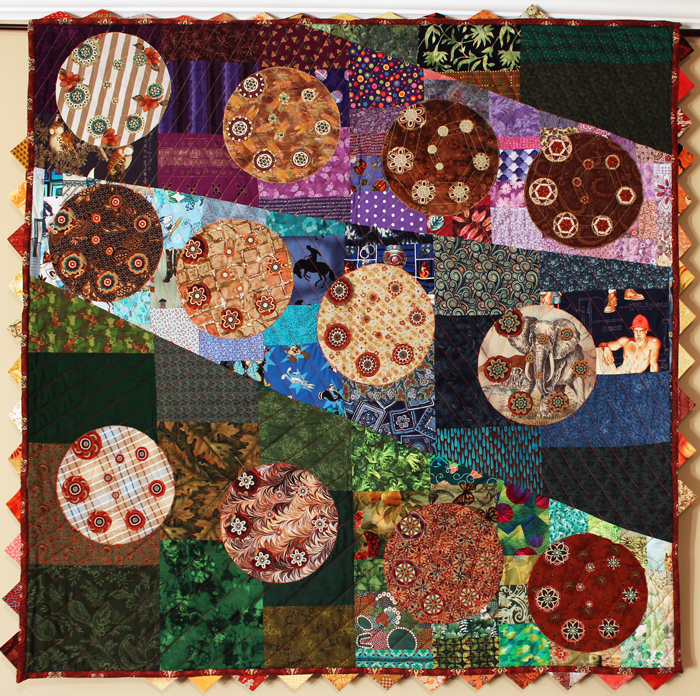
The quilts of J. Marcus Weekley incorporate a range of fabric styles, subjects, and textures that reference Scooby Doo, classical Japanese painting, and He-Man while speaking to current representations of gender in the United States. While fabric is the material and thread is the glue, Weekley makes quilts that operate as collage does and allow him to create multi-layered self-portraits filled with historical, artistic, and cultural allusions. (image: Atomic Circles (50″x50″; commercial cotton fabrics, hospital gown, cotton shirts, rayon and cotton threads; 2014)

Julie Graves Krishnaswami uses images from government documents, catalogs selling rare law books, reference books, dictionaries, legal texts, such as codes, and other similar materials. Drawing on her background as law librarian and legal research teacher at Yale Law School, Krishnaswami will explain how collage artists can use the Freedom of Information Act as a source for collage material and the process involved. (image: Words on a Woman (5″x6″; collage under wax; 2017))
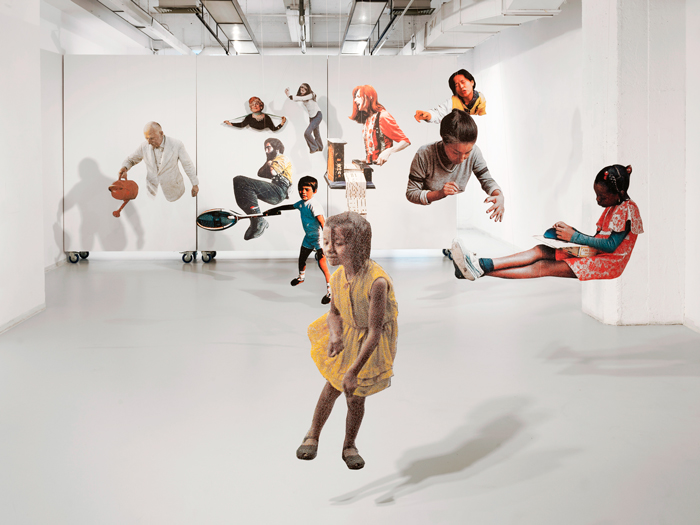
Through isolation, fragmentation, and decontextualization, Janina Anderson investigates the relationship between content and form, how frameworks define the information within them, how medium affects message, how a frame defines a painting. Anderson uses collage methodologies to explore how images function, stating her work is essentially about “looking really hard”. She will speak about collage as a strategy to create meaning while frustrating and highlighting the constructed meanings of visual culture. (image: Three Dimensional Collage Installation (dimensions variable; cut outs from National Geographic Magazine (1953–1989) scanned and enlarged 1,000%, printed on both sides and mounted on Bristol; 2017))
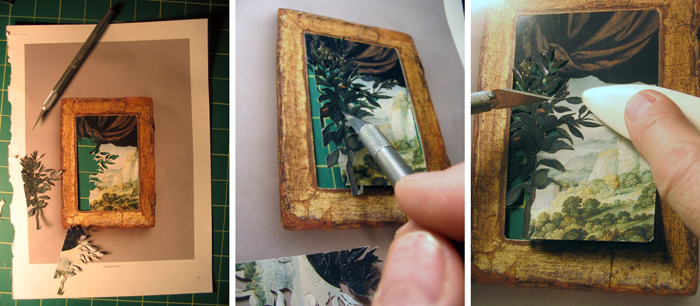
Todd Bartel, a dedicated collage artist for close to 40 years, has been pioneering “puzzle-piece-fit collage” since 2000. Using 19th and 20th century source materials as well as creating his own facsimiles of texts and engravings, his work dovetails the history of collage, with the history of landscape painting and the history of ecology. (image: burnished puzzle-piece collage process for Real Landscape No. 1)
Kolaj Fest New Orleans is a multi-day festival and symposium about contemporary collage and its role in art, culture, and society, July 12-15, 2018. Visit the website to learn more, see an overview of the program, and register to attend.
